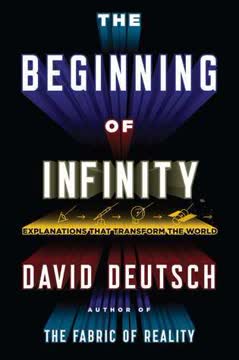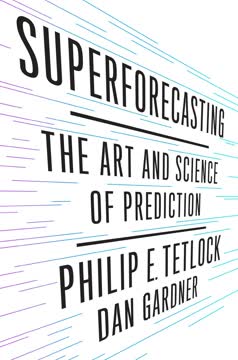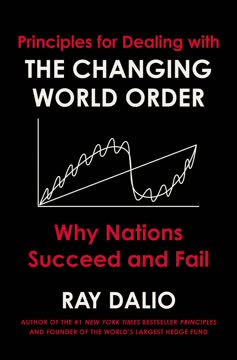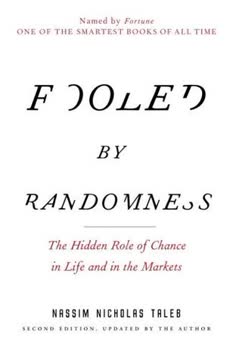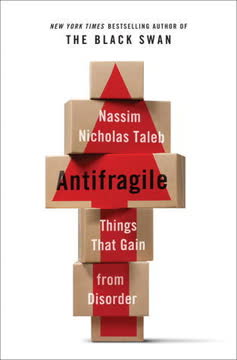النقاط الرئيسية
1. تبنَّى خاصية مقاومة الهشاشة: استفد من الفوضى والتقلبات
"مقاومة الهشاشة تتجاوز مجرد الصمود أو المتانة. فالمتين يقاوم الصدمات ويبقى كما هو، أما المقاوم للهشاشة فيتحسن ويتطور."
تعريف مقاومة الهشاشة. هي خاصية الأنظمة التي تستفيد من الضغوط والتقلبات والفوضى. على عكس الأنظمة الهشة التي تنهار تحت الضغط، أو الأنظمة المتينة التي تتحمل الإجهاد فقط، فإن الأنظمة المقاومة للهشاشة تتحسن وتنمو قوةً عند تعرضها للتقلبات.
أمثلة وتطبيقات:
- الأنظمة البيولوجية: تنمو العضلات قوةً مع الإجهاد الناتج عن التمارين الرياضية.
- الأنظمة الاقتصادية: يزدهر رواد الأعمال والمبتكرون في ظل تقلبات السوق.
- المعرفة: التجربة والخطأ تؤدي إلى الاكتشافات والتقدم التكنولوجي.
المبدأ الأساسي: استقبل جرعات محسوبة من العشوائية والضغط في مختلف جوانب الحياة لتصبح مقاومًا للهشاشة وتستفيد من فرص النمو والتطور.
2. تجنب الأضرار الناتجة عن التدخل الطبي أو غيره: تعرف متى يكون التدخل ضارًا
"في الطب نتعلم أن ربع التدخلات الطبية تقريبًا غير ضرورية وقد تكون ضارة."
شرح مفهوم الأضرار الناتجة عن التدخل. يشير هذا المفهوم إلى الأذى الذي تسببه التدخلات، خصوصًا في الأنظمة المعقدة التي يصعب التنبؤ بعواقب أفعالها. هذا المفهوم لا يقتصر على الطب فقط، بل يشمل الاقتصاد والسياسة واتخاذ القرارات الشخصية.
أمثلة على الأضرار الناتجة عن التدخل:
- الإفراط في تناول الأدوية مما يؤدي إلى آثار جانبية أسوأ من الحالة الأصلية.
- سياسات اقتصادية تهدف إلى الاستقرار لكنها تسبب أزمات أكبر وأقل تكرارًا.
- التربية المفرطة الحماية التي تعيق نمو الأطفال الطبيعي.
استراتيجية التخفيف: اتبع مبدأ "الأقل هو الأكثر"، وتدخل فقط عند الضرورة القصوى مع وعي كامل بالعواقب المحتملة غير المقصودة. ثق بقدرة الجسم على الشفاء الطبيعي وبطبيعة الأنظمة التي تصحح نفسها ذاتيًا.
3. طبق استراتيجية الدمبل: اجمع بين النقيضين لتحقيق أفضل النتائج
"استخدمت في البداية صورة الدمبل لوصف موقف مزدوج: الحذر في بعض المجالات (مقاومة للطيور السوداء السلبية) والمخاطرة الصغيرة في أخرى (منفتحة على الطيور السوداء الإيجابية)، وبالتالي تحقيق مقاومة للهشاشة."
شرح استراتيجية الدمبل. تعتمد هذه الاستراتيجية على الجمع بين طرفين متطرفين مع تجنب الوسط المعتدل. هذا الأسلوب يتيح الحماية من المخاطر السلبية والتعرض لفرص المكاسب المحتملة.
تطبيقات استراتيجية الدمبل:
- الاستثمار: دمج أصول آمنة جدًا (كالنقد) مع حصص صغيرة في فرص عالية المخاطر والعائد.
- الحياة المهنية: الحفاظ على وظيفة مستقرة مع متابعة مشاريع ريادية جانبية.
- النظام الغذائي: التناوب بين فترات الصيام والأكل الحر.
المبدأ الأساسي: بتجنب الوسط المعتدل، تتيح استراتيجية الدمبل الاستفادة من الأحداث الإيجابية غير المتوقعة مع الحد من التعرض للأحداث السلبية.
4. احترم حكمة الأجداد: قدّر القواعد المجربة عبر الزمن
"الزمن هو أفضل اختبار للهشاشة؛ فهو يشمل جرعات عالية من الفوضى، والطبيعة هي النظام الوحيد الذي ختمه الزمن بـ 'المتانة'."
تأثير ليندي. ينص هذا المبدأ على أن الشيء الذي استمر لفترة طويلة من الزمن من المرجح أن يستمر لفترة أطول. ينطبق هذا على الأفكار والتقنيات والممارسات الثقافية التي صمدت أمام اختبار الزمن.
أمثلة على الحكمة المجربة:
- الممارسات الغذائية: الصيام المتقطع، الأطعمة المخمرة.
- الأعراف الاجتماعية: أهمية المجتمع، احترام الكبار.
- إدارة المخاطر: التنويع، الاحتفاظ بالاحتياطات.
الرؤية الأساسية: مع عدم رفض الابتكار، يجب إيلاء اهتمام جاد للممارسات والأفكار التي صمدت عبر الزمن، لأنها على الأرجح أثبتت جدواها في مواجهة التحديات والظروف المتغيرة.
5. ابحث عن الخيارات المتعددة: زد من فرص المكاسب وقلل من الخسائر
"الخيارات المتعددة هي خاصية تحقيق مكاسب غير متماثلة (ويفضل أن تكون غير محدودة) مع خسائر محدودة (ويفضل أن تكون ضئيلة)."
تعريف الخيارات المتعددة. تعني وجود الحق، وليس الالتزام، باتخاذ إجراء معين. توفر هذه الخاصية المرونة والقدرة على الاستفادة من النتائج الإيجابية مع الحد من الخسائر المحتملة.
طرق زيادة الخيارات المتعددة:
- التعليم: اكتساب مهارات ومعارف متنوعة.
- بناء العلاقات: توسيع شبكة العلاقات في مجالات مختلفة.
- المالية: الحفاظ على السيولة وتجنب الديون.
- الحياة المهنية: تطوير مصادر دخل متعددة.
المبدأ الأساسي: من خلال تنمية الخيارات المتعددة في مختلف جوانب الحياة، تزيد قدرتك على التكيف مع الظروف المتغيرة والاستفادة من الفرص غير المتوقعة.
6. مارس مبدأ النفي: حسّن بإزالة ما هو ضار بدلاً من الإضافة
"البساطة أفضل. التعقيدات تؤدي إلى سلاسل مضاعفة من التأثيرات غير المتوقعة."
شرح مبدأ النفي. هو مبدأ تحسين الأنظمة أو الحالات عن طريق إزالة العناصر الضارة أو غير الضرورية بدلاً من إضافة عناصر جديدة. يعترف هذا الأسلوب بأن تحديد الخطأ أسهل من إيجاد الحل المثالي.
تطبيقات مبدأ النفي:
- الصحة: التخلص من الأطعمة المصنعة، تقليل التوتر.
- الإنتاجية: إزالة المشتتات، تبسيط سير العمل.
- اتخاذ القرار: استبعاد الخيارات السيئة قبل اختيار الأفضل.
الرؤية الأساسية: بالتركيز على الإزالة بدلاً من الإضافة، يقدم مبدأ النفي طريقة فعالة وغالبًا ما تُغفل لتحسين مختلف مجالات الحياة.
7. تحمل المسؤولية الشخصية: وازن بين الحوافز والنتائج
"لا تثق أبدًا بمن لا يتحمل مسؤولية أفعاله. بدون ذلك، يستفيد الحمقى والمحتالون، ولا تعود أخطاؤهم لتطاردهم."
تعريف تحمل المسؤولية الشخصية. يعني أن يكون للفرد مصلحة شخصية في نتائج أفعاله وقراراته. يوازن هذا بين الحوافز ويضمن أن يتحمل صانع القرار عواقب اختياراته.
أهمية تحمل المسؤولية:
- يقلل من المخاطر الأخلاقية والسلوك المتهور.
- يحسن جودة اتخاذ القرار.
- يبني الثقة والمصداقية.
مثال تاريخي: كان القانون البابلي القديم يلزم البنائين بالعيش تحت الجسور التي يبنونها لضمان الجودة والسلامة من خلال المخاطرة الشخصية.
تطبيقات حديثة: وضع سياسات تلزم صانعي القرار في مجالات مثل المالية والسياسة والطب بمشاركة المكافآت والمخاطر.
8. احذر من هوس الجديد: شكك في جاذبية الحداثة
"نحن مهيؤون لأن نكون ضحايا للنظريات، لكنها تأتي وتذهب، أما الخبرة فتدوم."
شرح هوس الجديد. هو الحب المفرط للجديد والافتراض بأن الأحدث دائمًا أفضل. قد يؤدي هذا الانحياز إلى تبني تقنيات أو أفكار غير مجربة مبكرًا، غالبًا على حساب البدائل المجربة.
مخاطر هوس الجديد:
- تجاهل الحلول المتينة والمجربة.
- زيادة التعرض للمخاطر غير المتوقعة.
- إهدار الموارد على ترقيات غير ضرورية.
مضاد هوس الجديد:
- تطبيق تأثير ليندي: تقدير الأفكار والتقنيات التي صمدت عبر الزمن.
- التشكيك في الفوائد الحقيقية للابتكارات الجديدة.
- موازنة الابتكار مع احترام الحكمة التقليدية.
9. تعرف على خاصية التقعر: فهم التأثيرات غير الخطية
"للهشاش، التأثير التراكمي للصدمات الصغيرة أقل من تأثير صدمة كبيرة واحدة مكافئة."
شرح خاصية التقعر. تشير إلى العلاقات غير الخطية حيث يتسارع تأثير التغيير مع زيادة حجمه. فهم هذه الخاصية ضروري للتعرف على الهشاشة ومقاومة الهشاشة في الأنظمة.
أمثلة على التقعر:
- الأسواق المالية: تسعير الخيارات وإدارة المخاطر.
- الصحة: التأثيرات الهرمية لبعض الضغوط.
- الابتكار: التأثير غير المتناسب للأحداث الشاذة.
الرؤية الأساسية: بفهم العلاقات التقعرية والتحدبية، يمكننا إدارة المخاطر بشكل أفضل والاستفادة من التأثيرات الإيجابية غير الخطية.
10. احتضن العشوائية: استغل قوة عدم اليقين
"العشوائية تعمل جيدًا في البحث – أحيانًا أفضل من البشر."
العشوائية كأداة. بدلاً من السعي الدائم للقضاء على العشوائية، اعترف بفوائدها المحتملة في الاستكشاف والابتكار وحل المشكلات.
تطبيقات العشوائية:
- الاكتشاف العلمي: النتائج العرضية تؤدي غالبًا إلى اختراقات.
- التطور: الطفرات العشوائية تدفع التكيف والتحسن.
- اتخاذ القرار: إدخال بعض العشوائية يمكن أن يتغلب على الانحيازات ويؤدي إلى خيارات أفضل.
المبدأ الأساسي: احتضن العشوائية المحسوبة كوسيلة لاستكشاف إمكانيات جديدة، وتجاوز الحلول المحلية، واكتشاف حلول غير متوقعة للمشكلات المعقدة.
آخر تحديث::
FAQ
What's Antifragile: How to Live in a World We Don't Understand about?
- Core Concept: The book introduces antifragility, a concept where systems benefit from shocks, volatility, and disorder, unlike fragile systems that break under stress.
- Triad Framework: Taleb categorizes systems into fragile, robust, and antifragile, helping readers understand different responses to stressors.
- Real-World Applications: The concept is applied to various domains, including economics, medicine, and personal life, illustrating how embracing uncertainty can lead to better outcomes.
Why should I read Antifragile by Nassim Nicholas Taleb?
- Practical Wisdom: Taleb offers insights that challenge conventional thinking about risk and uncertainty, relevant for navigating a complex world.
- Counterintuitive Ideas: The book encourages rethinking approaches to failure and success, emphasizing that mistakes can lead to growth and innovation.
- Engaging Narrative: Filled with anecdotes, historical references, and philosophical musings, Taleb's writing is both informative and enjoyable.
What are the key takeaways of Antifragile?
- Embrace Randomness: Taleb argues that randomness and uncertainty are not to be feared but embraced, as they can lead to unexpected benefits.
- Avoid Over-Intervention: The book warns against naive interventionism, which can lead to fragility, emphasizing that attempts to eliminate volatility often harm systems.
- Focus on Asymmetry: Understanding the asymmetry between potential gains and losses is crucial for navigating uncertainty effectively.
What is the definition of antifragility in Antifragile?
- Antifragility Defined: Taleb defines antifragility as the property of systems that gain from disorder and stress, thriving and growing when exposed to volatility.
- Beyond Resilience: Antifragility goes beyond resilience or robustness, which only resist shocks; antifragile systems improve and evolve through challenges.
- Real-World Examples: Taleb illustrates antifragility through examples from nature, economics, and personal experiences, showing how systems can thrive under stress.
What is the Triad framework in Antifragile?
- Three Categories: The Triad consists of fragile, robust, and antifragile systems, helping readers categorize and understand different responses to stressors.
- Fragile Systems: These systems break under stress and need protection, seeking tranquility and stability.
- Antifragile Systems: These systems benefit from volatility and uncertainty, thriving in chaotic environments and loving randomness.
How does Antifragile relate to modernity?
- Critique of Modernity: Taleb critiques modernity for suppressing randomness and volatility, leading to fragility, and argues that top-down policies often harm us.
- Need for Volatility: The book emphasizes that systems need a certain level of volatility to thrive, as excessive stability can lead to hidden risks.
- Historical Context: Taleb provides historical examples to illustrate how societies that embraced uncertainty fared better than those that sought to eliminate it.
What is the barbell strategy mentioned in Antifragile?
- Definition of Barbell Strategy: This strategy involves combining extreme risk aversion with high-risk investments, avoiding the middle ground.
- Risk Management: It allows individuals to protect themselves from significant losses while still benefiting from potential high returns.
- Practical Application: Taleb suggests applying the barbell strategy in various aspects of life, from investing to personal decisions, to enhance antifragility.
What is optionality, and why is it important in Antifragile?
- Definition of Optionality: Optionality refers to the ability to take advantage of favorable outcomes while minimizing potential losses.
- Real-World Applications: Taleb illustrates how optionality can be applied in various domains, such as investing, where having multiple options allows for better decision-making.
- Contrast with Traditional Risk Management: Optionality encourages a dynamic approach that leverages unpredictability for positive outcomes, unlike traditional risk management.
How does Antifragile address the concept of iatrogenics?
- Definition of Iatrogenics: Iatrogenics refers to harm caused by medical intervention, highlighting the risks of over-treatment.
- Broader Implications: The concept extends beyond medicine to other fields, where intervention can lead to unintended negative consequences.
- Caution Against Naive Intervention: Taleb warns that well-intentioned actions can often lead to fragility, advocating for a more cautious approach to intervention.
What is the "via negativa" approach mentioned in Antifragile?
- Concept of Via Negativa: This approach focuses on subtracting harmful elements rather than adding new ones, leading to more effective solutions.
- Application in Medicine: Taleb argues that removing harmful substances can have a more significant impact on health than introducing new treatments.
- Broader Implications: The via negativa philosophy encourages eliminating negative influences rather than seeking constant improvement, leading to a more fulfilling life.
What are the best quotes from Antifragile and what do they mean?
- "What does not kill me kills others.": This quote emphasizes that while some individuals may grow stronger from adversity, others may suffer, highlighting the interconnectedness of fragility and antifragility.
- "The fragile wants tranquility; the antifragile loves randomness.": This quote encapsulates the core idea of the book, contrasting the desire for stability with the benefits of embracing uncertainty.
- "Wind extinguishes a candle and energizes fire.": This metaphor illustrates how challenges can either weaken the fragile or strengthen the antifragile, encouraging readers to seek out stressors for growth.
How does Taleb suggest we deal with uncertainty in Antifragile?
- Accept Uncertainty: Taleb emphasizes the importance of accepting uncertainty as a fundamental aspect of life, focusing on building systems that can adapt to unexpected changes.
- Build Redundancy: He advocates for creating redundancy in various aspects of life, such as finances and health, to mitigate risks and provide support during challenging times.
- Focus on Small Bets: Taleb recommends making small, low-risk bets rather than large, high-stakes investments, allowing for experimentation and learning without catastrophic losses.
مراجعات
يحظى كتاب "مضاد للهشاشة" بتقييمات متباينة. فبينما يثني البعض على مفهوم طاليب المبتكر حول الأنظمة التي تستفيد من الفوضى، ينتقد آخرون أسلوبه في الكتابة وتكبره الظاهر. يجد المؤيدون في الكتاب مادة فكرية عميقة ورؤية ثاقبة، ويقدرون تحدي طاليب للحكمة التقليدية. أما المنتقدون فيرون أن الأفكار المقدمة غالبًا ما تكون بديهية أو غير موضحة بشكل كافٍ، وأن نبرة طاليب قد تثير النفور. يستعرض الكتاب موضوعات العشوائية والمخاطر والمرونة في مجالات متعددة، مما يثير إعجابًا وإحباطًا في آنٍ واحد لدى القراء، الذين يعترفون بأهميته رغم ما يحتويه من عيوب.
Incerto Series
Similar Books
